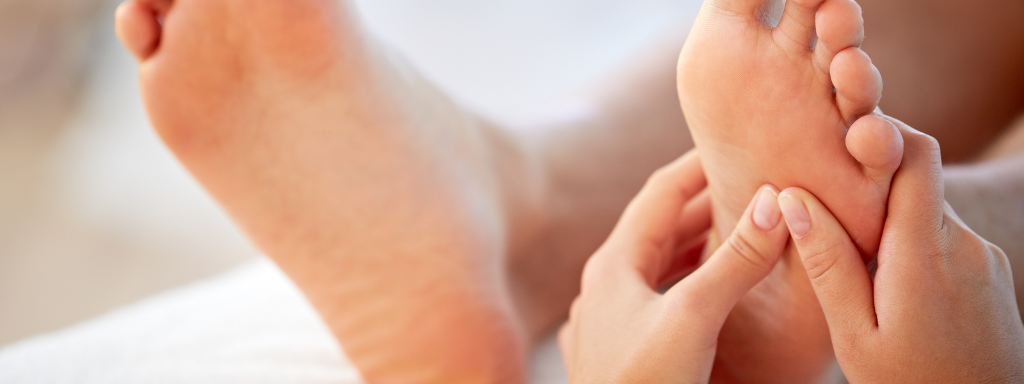What is reflexology?
Reflexology is a gentle manual technique based on the principle that our feet and hands are mirror images of our body. The approach aims to apply pressure on reflex points on the feet (foot reflexology) and hands (palm reflexology) in order to activate the body’s self-healing processes and thus encourage the body to return to a state of balance.
A few words on reflex points
Also called reflex zones, these points are associated with specific organ functions or organs. They can be found on the feet, hands and ears, among others. There are detailed maps of the different reflex points according to the region (feet, hands, ears, etc.).
By applying pressure to a given reflex point, it is possible to have an effect on the associated area of the body in order to relieve the tensions or imbalances that are present there. For example, the therapist might work on reflex points on the foot related to the colon. This will stimulate bowel activity to improve digestion.
What are the benefits of reflexology?
Through its gentle but profound action, reflexology helps the body return to a state of balance or maintenance. In other words, the approach supports the body so that it can function optimally.
Here are some of the benefits associated with this manual therapy*:
- Relaxation and well-being
- Reduction of stress and anxiety
- Improved quality of sleep
- Pain relief
- Stimulation of internal organs, which may help relieve certain functional disorders (e.g. constipation, digestive disorders, premenstrual syndrome)
- Improvement of blood and lymphatic circulation
*Reflexology is a complementary approach that can provide many health benefits. The technique is not intended to replace medical treatment.
Contraindications
Although reflexology is generally considered to be safe, there are some contraindications to the approach:
- Thrombosis
- Phlebitis
- Foot injury (e.g. sprain, strain or bruise)
- Woman in first trimester of pregnancy
- Active infection
Without constituting absolute contraindications, certain situations will require the therapist to adjust his intervention. For example, reflex points should be avoided in pregnant women as they could trigger labour.
It should be noted that the therapist always collects information from the client before beginning the treatment. This information will be used to identify any contraindications to reflexology. The therapist will then be able to direct the client to the appropriate medical resource or adjust the treatment accordingly to ensure safety.
Course of the session
A reflexology treatment takes place on a chair or a massage table. The client remains clothed, as the manoeuvres are mainly performed on the feet and hands, but sometimes on the face and ears.
The therapist will begin the session by gathering information in order to take stock of the person’s general state, which will enable him/her to adapt his/her intervention. To do this, the therapist will have the client fill out a health questionnaire and ask questions to determine their needs, but also to identify any contraindications to reflexology.
Once the client is on the massage table, the therapist will first work on the feet and legs (or other areas depending on the type of reflexology) to help the client relax.
The therapist will then identify the reflex points on the feet and hands that have tension and blockages and apply pressure to them, alternating with other gentle and light manoeuvres. The aim here is to release tension and stimulate the areas of the body (organs, organ functions, etc.) associated with these reflex points. The therapist will always adapt the pressure to the client’s feeling. Feedback during and after the treatment will help the therapist to adjust throughout the session.
A treatment usually lasts between 40 and 60 minutes depending on the reason for the consultation and the client’s needs. More than one appointment may be required.
Notes :
-
Although a session may be devoted exclusively to reflexology, the approach can also be integrated with a massage therapy session.


